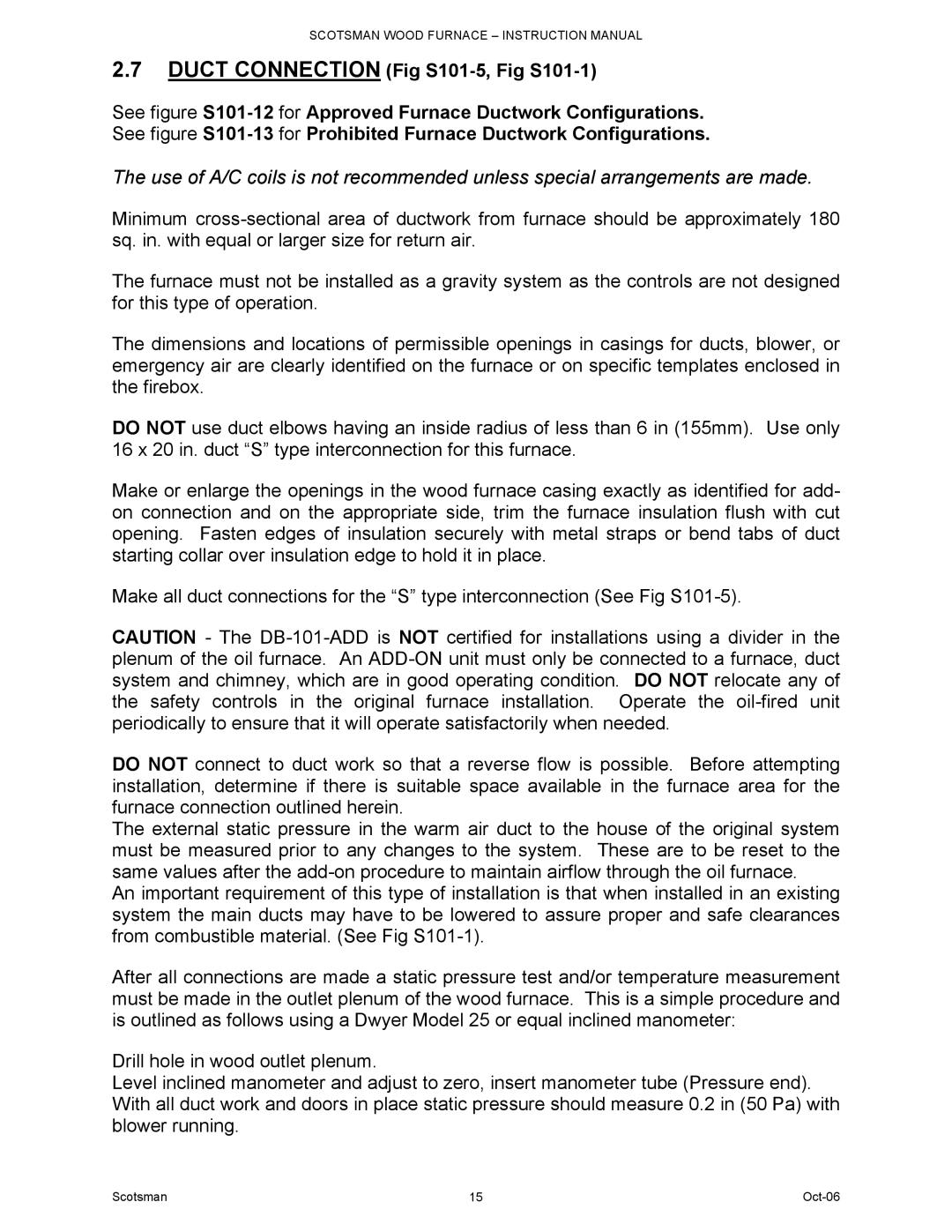DB-101 specifications
The Scotsman Ice DB-101 is a state-of-the-art ice maker designed for commercial use, catering to restaurants, bars, hotels, and other hospitality venues that require a reliable supply of high-quality ice. This model is highly regarded for its efficiency, power, and innovative technology, making it an ideal choice for businesses looking to enhance their ice production capabilities.One of the standout features of the Scotsman Ice DB-101 is its ability to produce a significant amount of ice. This ice machine can produce up to 105 pounds of ice per day, depending on ambient conditions, making it suitable for establishments with high ice demands. The unit is designed to create individual half-dice ice cubes, which not only chill beverages efficiently but also provide a visually appealing presentation.
The technology behind the Scotsman Ice DB-101 is impressive. It employs a powerful self-diagnostic control system that allows for easy monitoring of the machine's performance. This feature minimizes downtime by promptly alerting users to potential issues, ensuring that the ice production remains uninterrupted. Additionally, the unit boasts a compact design that fits seamlessly into various spaces while providing substantial ice-making capacity.
Energy efficiency is another hallmark of the Scotsman Ice DB-101. The machine follows eco-friendly standards, consuming less power compared to other models in its class. This feature not only helps in reducing energy bills but also contributes to sustainability efforts within the hospitality industry.
Other notable characteristics include a durable stainless-steel construction that ensures longevity and resistance to corrosion, making it suitable for busy environments. The user-friendly interface allows for easy operation, and the automatic rinse cycle feature maintains ice purity by preventing mineral buildup and ensuring optimal taste.
The Scotsman Ice DB-101 also offers a versatile water source option, compatible with both filtered and standard water, ensuring users can maintain ice quality as per their requirements.
In summary, the Scotsman Ice DB-101 is a top-tier ice machine that combines efficiency, durability, and advanced technology, making it a valued investment for any commercial establishment that relies on a consistent supply of ice for its operations. Its capacity, energy efficiency, and user-friendly design make it a notable choice for industry professionals.
